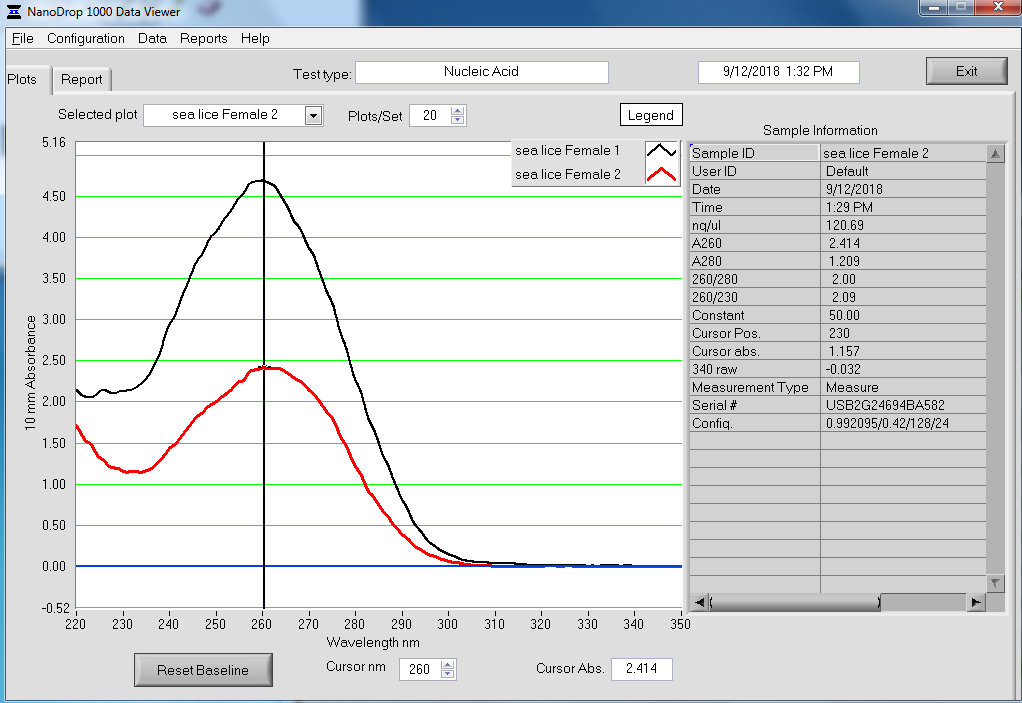We were approached by Cindy Lawley (Illumina Market Development) yesterday to see if we’d be able to participate in some product development. We agreed and need some geoduck DNA to send them, in case she’s able to get our species greenlighted for use.
Isolated DNA from ctenidia tissue from the same Panopea generosa individual used for the BGI sequencing efforts. Tissue was collected by Brent & Steven on 20150811.
Used the E.Z.N.A. Mollusc Kit (Omega) to isolate DNA from two separate 50mg pieces of ctenidia tissue according to the manufacturer’s protocol, with the following changes:
- Samples were homogenized with plastic, disposable pestle in 350μL of ML1 Buffer
- Incubated homogenate at 60C for 1hr
- No optional steps were used
- Performed three rounds of 24:1 chloroform:IAA treatment
- Eluted each in 50μL of Elution Buffer and pooled into a single sample
Quantified the DNA using the Qubit dsDNA BR Kit (Invitrogen). Used 1μL of DNA sample.
Concentration = 19.4ng/μL (Quant data is here [Google Sheet]: 20161221_gDNA_qubit_quant
Yield is low (~1.8μg), but have enough to satisfy the minimum of 1μg requested by Cindy Lawley.
Evaluated gDNA quality (i.e. integrity) by running ~250ng (12.5μL) of sample on 0.8% agarose, low-TAE gel stained with ethidium bromide.
Used 5μL of O’GeneRuler DNA Ladder Mix (ThermoFisher).
Results:


Overall, the sample looks good. Strong, high molecular weight band is present with minimal smearing. However, there is a smear in the ~500bp range. This is most likely residual RNA. This is surprsing since the E.Z.N.A Mollusc Kit includes n RNase step. Regardless, having intact, high molecular weight DNA is the important part for this project. Will prepare to send remainder (~1.5μg) of geoduck to Illumina with other requested samples.





